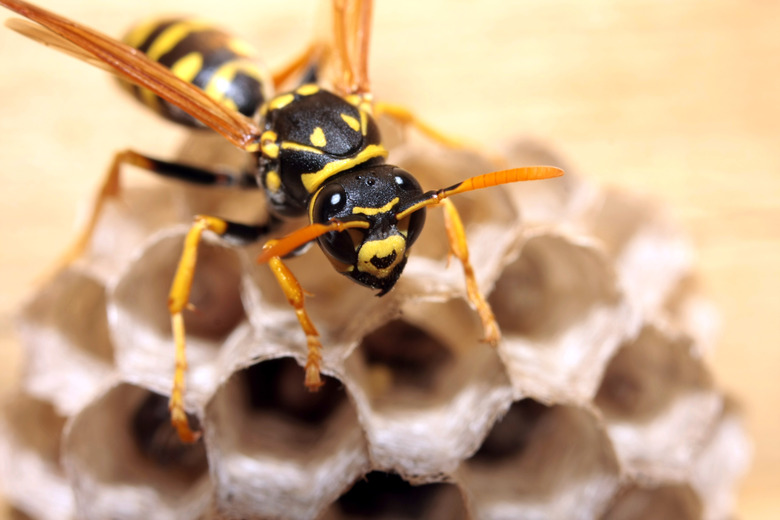How To Identify Hornets & Wasps In Tennessee
Hornets are species of wasps. The difference between hornets and other species of wasps is that that prey predominately on other insects. Other wasp species play minor roles as pollinators of flowers and scavenge for food. Unlike bees that can only sting once, hornets and wasps are capable of stinging multiple times. Technically speaking, there is a single hornet species in North America, that being the brown hornet. You can find Eastern cicada killer wasps, the paper wasp, brown hornet and yellow jacket throughout Tennessee.
Step 1
Observe the thorax and abdominal segments of the wasp. Adult Eastern cicada killer wasps display reddish and black areas over their thorax. These wasps have black to reddish-brown markings and subtle yellow stripes on the abdominal segments. The brown hornet has reddish-brown markings in these areas and legs the same color as its abdomen. The paper wasp is also a reddish-brown color, but exhibits a yellow circle body marking. The yellow jacket has either a black and yellow or black and white coloration.
Step 2
Look closely at the wings of the insect. The Eastern cicada killer wasps, which are frequently incorrectly identified as hornets, have brownish wings. The wings of the paper wasp are dark, whereas those of the yellow jacket wasp are a lighter color than those of the cicada wasps.
Step 3
Take notice of the length and girth of the insect's body. The paper wasp has a slender body compared to hornets in general, and to the yellow jacket wasp specifically. The yellow jacket wasp has a definite waist, whereas that of the paper or umbrella wasp tapers at both ends. Neither the brown hornets nor the Eastern cicada killer wasps have very defined waists.
Step 4
Observe where the insect has built its nest. Paper wasps choose to build nests in attics. You can find the nests of yellow jackets, Eastern cicada killer wasps and brown hornets outdoors.
Step 5
Observe the overall size of the insects. The yellow jacket is up to an inch in length, while the brown hornet is slightly larger at over an inch in length. Eastern cicada killer wasps are considered to be one of the largest wasp species in Tennessee and can measure 1.5 inches in length. The paper wasps are relatively small, being just an inch in length.
Things Needed
- Binoculars
- Wasp and hornet identification book
Cite This Article
MLA
Bolton, Naomi. "How To Identify Hornets & Wasps In Tennessee" sciencing.com, https://www.sciencing.com/identify-hornets-wasps-tennessee-7806864/. 13 March 2018.
APA
Bolton, Naomi. (2018, March 13). How To Identify Hornets & Wasps In Tennessee. sciencing.com. Retrieved from https://www.sciencing.com/identify-hornets-wasps-tennessee-7806864/
Chicago
Bolton, Naomi. How To Identify Hornets & Wasps In Tennessee last modified March 24, 2022. https://www.sciencing.com/identify-hornets-wasps-tennessee-7806864/
